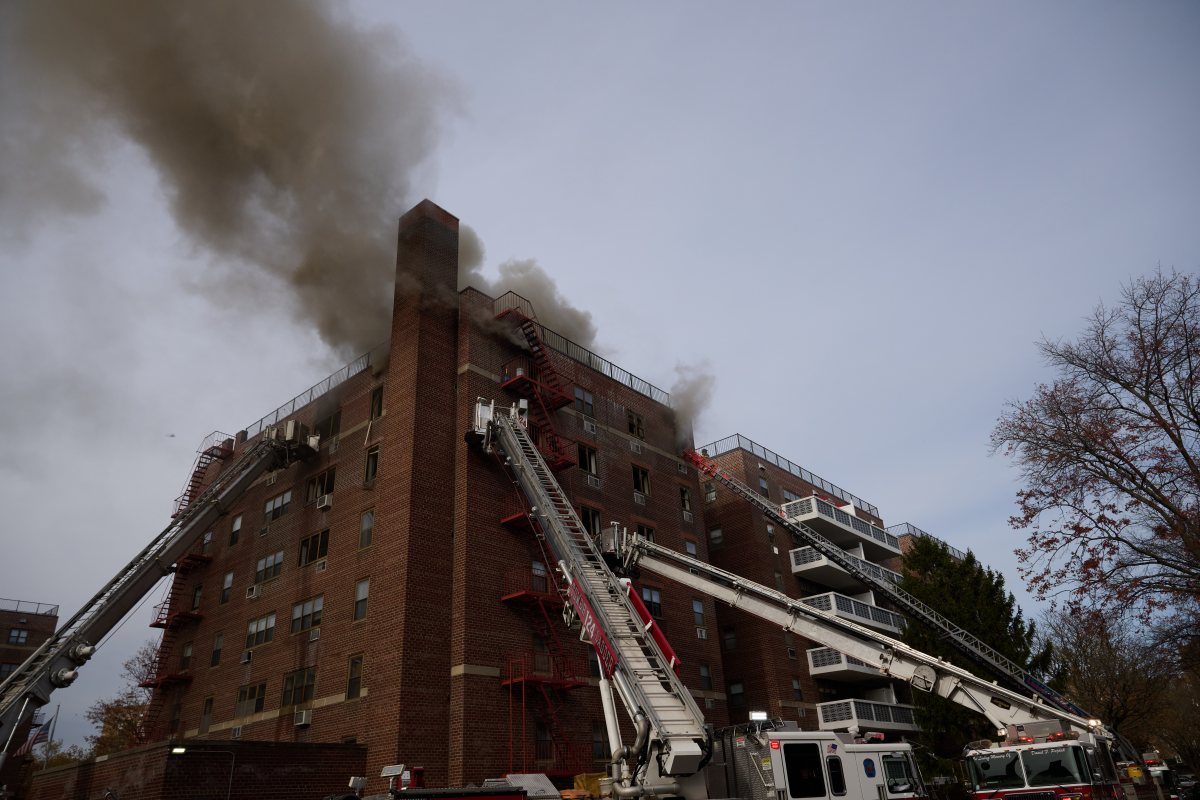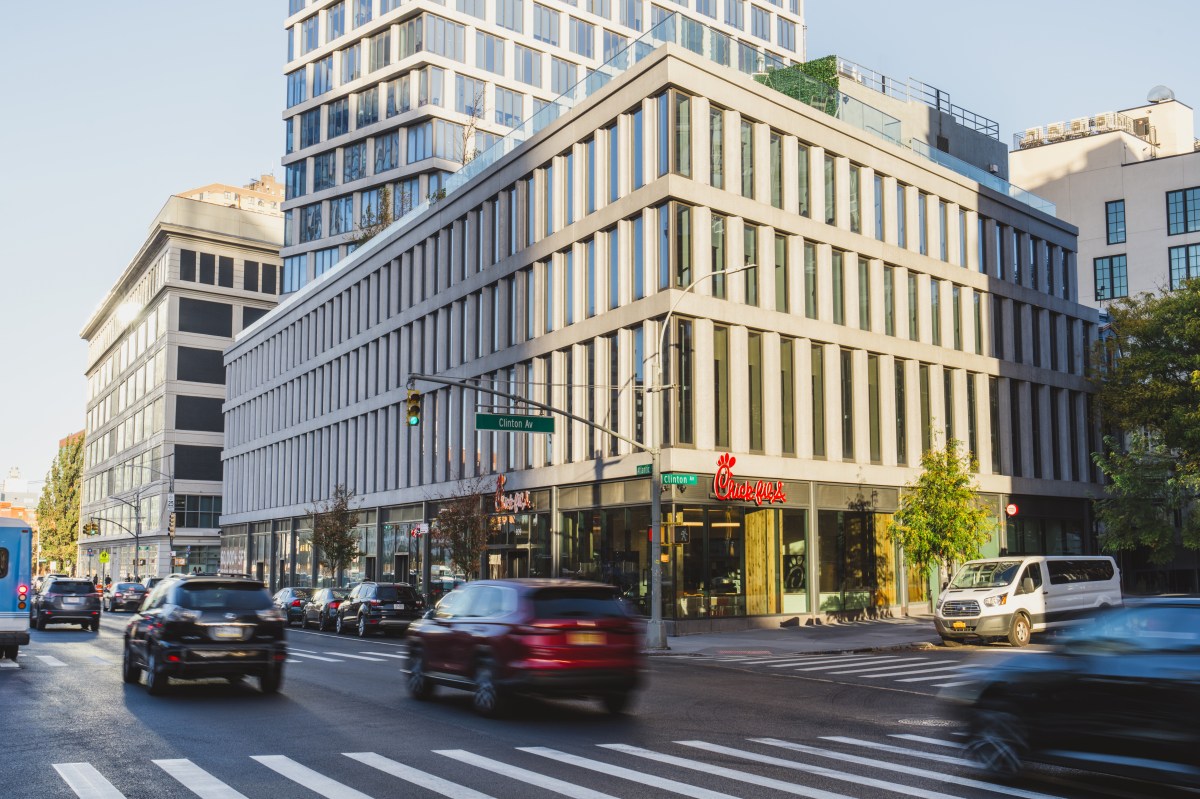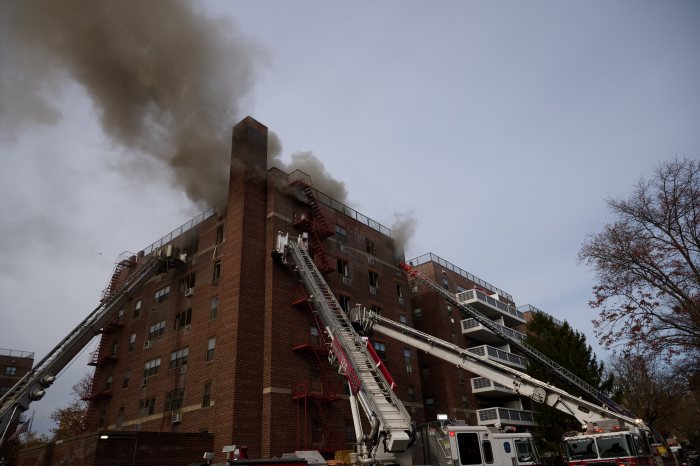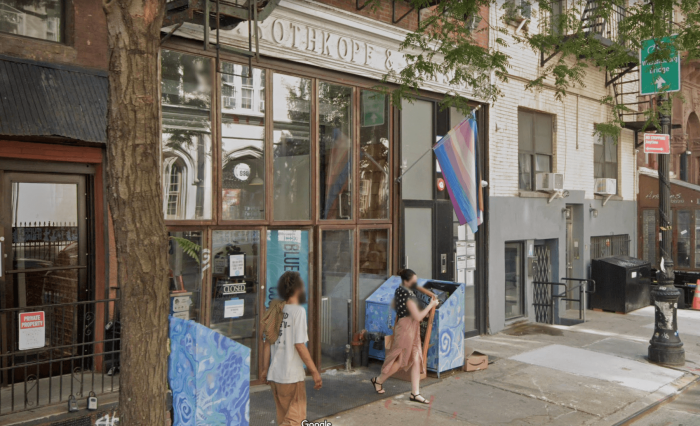by Lincoln Anderson
Volume 81, Number 11 | August 11 – 17, 2011
West and East Village, Chelsea, Soho, Noho, Little Italy, Chinatown and Lower East Side, Since 1933 Brian Steinwurtzel, right, and Pat Smith during last week’s meeting with the editorial staff of The Villager.
from outside district
As passionate debate over the proposed Soho Broadway Business Improvement District continues, backers of the BID are saying they want to “set the record straight.”
Misconceptions about how BIDs work have contributed to the opposition to the initiative, according to members of the Broadway Soho BID steering committee, several members of which last week sat down with this newspaper’s editorial staff to try to clarify what they say are those misunderstandings. The meeting included Brian Steinwurtzel, the steering committee’s chairperson; Barbara Cohen, a consultant who prepared the BID plan and budget; Mary Balaban, a member of ACE and secretary of the steering committee; and Pat Smith, from Rubenstein Associates, which is doing public relations for the BID effort. First of all, they said, the BID will not be controlled by the nine major property owners in the district. While these property owners do represent more than one-third of the district’s total assessed value, they own only about 15 of the 280 tax lots (or 5 percent) that are within the BID’s boundaries, according to Cohen. The proposed district stretches along Broadway between Canal and Houston Sts.; because many of the buildings extend all the way through the block, the BID also includes most of the east side of Mercer St. and much of the west side of Crosby St. Cohen said that when examining the BID ballots — in which property owners voted on whether they supported the plan — the Department of Small Business Services takes into consideration both the percentage of total tax lots and the assessed value of the entire district that is in favor of the project. And, of the 124 tax lots that responded to the BID ballot, 99 (or about 80 percent) voted for the BID. Smith noted the return was higher than that in a high-turnout New York City general election.
“There isn’t one property owner that dominates the district, where you sort of have to look to please them,” Cohen said. The amount of assessed value that the nine largest property owners comprise, she noted, doesn’t give those owners a bigger seat at the table when it comes to deciding how to implement BID services once the organization is formed. “The beauty of a BID in the way the law was crafted was, you have to include everyone to make these decisions, yet the commercial property owners are the ones that pay for it,” noted Steinwurtzel. While the future board of directors composition would be 51 percent property owners, the board would also include residents and commercial tenants, all of whom would weigh in on the BID’s decisions. The steering committee, Steinwurtzel said, has done ample outreach to solicit stakeholders’ opinions.
Second, the steering committee has no intention at this time to expand the BID further into Soho, Steinwurtzel said. Freedom of Information Law (FOIL) requests by BID opponents revealed that the idea of expanding the BID was, in fact, tossed around in certain steering committee meetings, but Steinwurtzel said the notion didn’t gain any traction. Expanding a BID, therefore, is “possible but improbable at this point,” he noted, adding it would require “the same process, as if you were starting from scratch.” In other words, it would be required to have outreach meetings for the public, followed by a vote by property owners, a review by the Department of Small Business Services and, finally, a vote by the City Council. Much of the BID’s opposition, the steering committee members noted, has stemmed from residents and property owners outside the catchment area. However, BID foe Sean Sweeney, director of the Soho Alliance community organization, countered this claim. The opposition, he contended, was spearheaded by Peter Davies and other Broadway residents who formed the Soho NO BID Committee, an offshoot group of the Alliance. Regarding expansion, Sweeney and other BID critics fear that, despite the steering committee’s latest assurances, the BID could very well be enlarged in the years to come.
“There’s nothing wrong with people outside of Broadway to fight it now before this cancer spreads through all of Soho and the South Village,” said Sweeney.
Residents living outside the district’s catchment area also have a stake in the initiative, Sweeney argued, since additional tourism that the BID would encourage would have a bad ripple effect on Soho as a whole. “I live on Greene St., just two blocks from Broadway,” he said. “More tourism on Broadway will mean more tourists on the subway platforms and on the side streets.”
Yet BID advocates believe they and the opponents share similar goals, in that alternatives to the BID, such as community employment programs for the homeless, have proven unsustainable.
Balaban said the idea for a Soho BID emerged after Henry Buhl, the founder of ACE, brought property owners together more than a year ago and told them that ACE’s cleaning of Broadway was no longer financially sustainable. Relying on voluntary contributions from property owners and stores was no longer a working model, she noted, especially since many of the stores now lining Broadway have their central offices in Europe or on the West Coast: It’s impossible to get them, say, to cut a check in a pinch for $50 or $100, the way a locally based merchant could do, she said. “Soho has already changed,” Steinwurtzel stressed. “Nike is already here. Hollister is already here. Abercrombie & Fitch is already here.
“Most of the opponents want the same thing we do,” mainly, a cleaner Broadway corridor, he said.
Indeed, last year, an ad hoc group of Broadway residents — some of whom now object to the BID — complaining that Soho was “under siege,” wrote a letter to city officials asking for greater enforcement of regulations on vending, noise and other violations. This residents’ group couldn’t be reached for comment by press time. The BID, its proponents assured, will be the unifying voice, and the eyes and the ears on the street, to address these problems.
“We don’t know each other very well,” Steinwurtzel said of the district’s different stakeholder groups. “This will allow everybody to come together.”
With reporting
BID group charges much opposition is





































